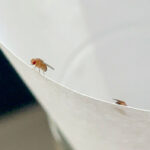William Golding’s Lord of the Flies masterfully uses symbolism to explore the complexities of society and human nature when a group of British schoolboys are stranded on a deserted island. Among the many powerful symbols in the novel, the creepers, or jungle vines, play a significant role in representing the fragile and tangled nature of society itself. Like a seemingly organized ball of yarn that can quickly become a chaotic mess, society, as depicted through the island setting, is shown to be easily disrupted and unravelled.
Creepers as a Symbol of Society’s Tangled Nature
Golding introduces the creepers early in the novel, establishing them as an integral part of the island’s environment and, more importantly, as a metaphor for society. Imagine a ball of yarn – from a distance, it appears neat and whole. However, upon closer inspection, it’s composed of numerous individual strands intricately woven together. This reflects society, which is made up of individual people connected and interdependent. The creepers, with their many intertwined vines, mirror this complexity. Just as a ball of yarn can become tangled and lose its form, society, symbolized by these vines, is presented as inherently fragile and susceptible to disorder.
Alt text: The cover of Lord of the Flies book, depicting a pig’s head on a stake, symbolizing savagery and the breakdown of civilization.
Restriction and Entanglement: How Creepers Impede Progress
The physical presence of the creepers in the jungle also carries symbolic weight. They are not merely background scenery; they actively impede the boys’ movement, both literally and figuratively. As one passage in Lord of the Flies illustrates, “I can’t hardly move with all these creeper things.” (Golding, Chapter 2). This statement reflects how societal structures, while intended to provide order, can also become restrictive and hinder individual and collective progress. The creepers entangle and hold back the boys, mirroring how societal rules and norms, when misused or corrupted, can stifle growth and development, leading to stagnation and failure, much like what befalls the boys’ attempt to create a civilized society on the island.
Creepers and the Fire: Symbolism of Savagery and Destruction
In a crucial scene towards the end of the novel, Jack and his tribe resort to burning the creepers to smoke out Ralph, highlighting another layer of symbolism. “They had smoked him out and set the island on fire” (Golding, Chapter 12). This act of setting the creepers ablaze is not just a hunting tactic; it represents the destructive force of unchecked savagery. Fire, in this context, symbolizes the consuming nature of primal instincts and the annihilation of civilization. By burning the creepers, which represent the already fragile societal structure, Jack effectively destroys any remaining semblance of order and descends into complete barbarity. The burning vines become fuel for the fire of savagery, signifying the final collapse of the boys’ civilized intentions.
Alt text: Group of boys stranded on a tropical island, representing the isolated society in Lord of the Flies and the vulnerability of civilization.
Individual Strands, Collective Society
Ultimately, the creepers in Lord of the Flies serve as a constant reminder of the delicate balance within any society. Just as the jungle vines are composed of individual strands that collectively form a dense and sometimes impenetrable mass, society is made up of individual citizens. The strength and resilience of society depend on the care and consideration given to each individual strand, each person within it. Golding’s use of creepers as a symbol underscores the vital message that society, like these intertwined vines, requires careful nurturing and maintenance to thrive and avoid unraveling into chaos and savagery. Ignoring this fragility, as the boys on the island tragically demonstrate, can lead to the downfall of even the most promising beginnings.
